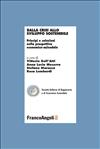The recent commitment to an evaluation of the quality of research fostered by the ANVUR - Agenzia Nazionale di Valutazione del sistema Universitario e della Ricerca - National Agency for the Evaluation of University and Research (VQR 2004-2010) raised a number of questions about what is important to be assessed, which aspects are worthwhile (e.g. scientific quality, practical impact, internationalization etc.) and which methods and tools for measuring and evaluating are to be used (peer-reviewed journals, impact factors, journal rankings, etc.). (Coda, 2011; Palumbo, 2011; Dalli, 2012; Rebora, 2012; Sostero, 2012). Besides the quality of research strictu sensu, one of the aspects that could be considered in the evaluation is the so-called "impact" of research. Although neglected in the Italian system, this dimension is present, even if with different connotations, in some of the evaluation systems used in other countries (Palumbo, 2011; De Nicolao, 2013th, b; Sargiacomo, 2013). The purpose of this paper is to analyse and systematize the main national and international contributions dealing with the concept of "research impact" in order to propose the first critical reflections.






